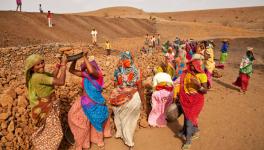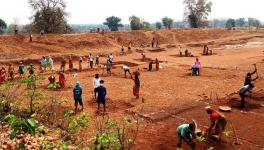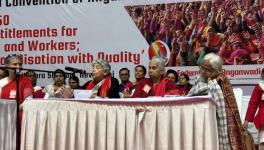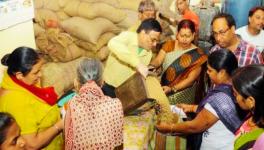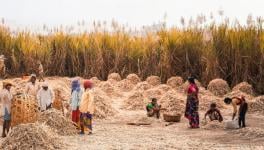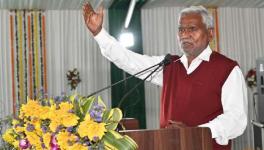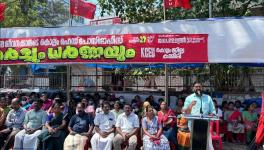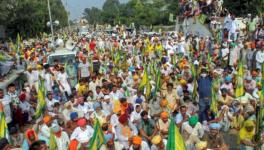Tribal Development: Deprivation, Poverty, Dispossession
Development is supposed to be a process of expanding the real freedoms of people. In other words, it is a process that enlarges the capacity of individuals to avoid deprivations, such as starvation, under-nourishment, morbidity and mortality. Therefore, development may not happen unless an individual’s deprivation is removed.
Poverty, unemployment, forced displacement and alienation reduce the capacities of individuals to enjoy their freedoms. But in the current socio-economic scenario in India, displacement and alienation are the foundation stones of development. Several development projects involve the introduction of direct control by a developer over land which was previously owned by a subaltern individual or group. This displacement is not only physical but affects the socio-cultural sphere too.
According to a report by the World Commission on Dams, not only the loss of livelihood and means of production but also one’s favourable socio-cultural milieu is lost during displacement. Dams, mining and industrialisation in India have caused as much displacement as other developmental projects. According to various estimates, displacement in India from dam projects alone ranges from 21 to 40 million. The Sardar Sarovar Dam Project on the Narmada river, which has displaced 1,27,000 people, is perhaps the most widely-researched and discussed project involving forced resettlement in history.
The New Economic Policy, liberalisation, privatisation and globalisation in 1991, made the pace of forced displacement and land alienation in India extremely rapid. From tribal hamlets to urban slums, vast territories were left without government support. The inclination of the state towards market forces undermined any pro-people development policy. Not just men, forced displacement and land alienation adversely affect children and women too, forcing them into unanticipated migration and involuntary resettlement. They lose their livelihoods, ongoing education, existing health care facilities and nutrition. Therefore, displacement and land alienation may not be fully explained until outcomes such as migration and involuntary resettlement are explored explicitly.
Development economist Jean Dreze has pointed out that displacement, so far, has been a “history of failures”. In his view, the total lack of transparency, especially the blockage of information from the project authority to the displaced community, has led to failed R&R [resettlement and rehabilitation]. Displacement, therefore, should be voluntary, and a resettlement policy should ensure that people’s views are sought before they are moved. Hence it is imperative to define displacement, land alienation, migration and rehabilitation policies.
Non-traditional security threats
Contemporary challenges such as environmental degradation, poverty and extremism differ from the traditional military idea of threats. State-centric traditional security issues, which determined the crucial paradigm during the Cold War era, are being challenged these days. Traditionally, national security is defined in terms of the ability of a state to protect its interests, which are broadly defined as territorial integrity, sovereignty and independence of the nation from external threats.
The traditional security paradigm does not include within its ambit issues of human security that are jeopardised today by non-traditional challenges. A people-centred notion of security includes economic, food, health, environmental, personal, community and political security. The rapidly increasing threats today are due to the struggle for energy resources and the depletion of other resources—such as food shortages, increase of infectious diseases, cross-border environmental degradation, forced migration, international terrorism, insurgency, ascendancy of non-state actors in drugs, arms, money laundering and financial crime organisations. Because the distribution of economic benefits has remained deeply unequal, high economic growth has not lessened the extent of food insecurity and malnutrition.
Not all growth amounts to development, nor is it equally distributed to cater to the minimum needs of ordinary citizens. This is because in India the contradiction of poverty in the midst of plenty is widely prevalent. Poverty is deepest among members of Scheduled Castes and Tribes in rural areas. A major cause of poverty among India’s rural people, both individuals and communities, is the lack of access to productive assets and financial resources. High illiteracy, inadequate health care and extremely limited access to social services are common. The development of micro-enterprises, which could generate income and enable the poor to improve their living conditions, has only recently become a focus for the government.
People’s participation
Democracy is never complete unless people’s participation and active involvement are assured. Particularly in this modern age, where it is said that power belongs to the people, the government is supposed to be the agent of their welfare. People come into direct contact with the government through a decentralised system, at a local level, more so in rural and remote areas. The transfer of authority and power from a higher level to a lower level—from the powerful to the powerless—follows a path whereby the centralised power gives way to the distribution of power among the people at the grass-roots.
After Independence, democracy and development became interrelated in the process of modernisation. In the context of participatory development, decentralisation widens the scope of people’s participation in the developmental process. The debate supporting decentralisation always advocates that people situated at the grass-roots level are better equipped to take care of themselves than the ones devising their policies, who are located far away geographically and have no idea about the local dynamics.
Deprived people are disproportionately affected by non-traditional challenges such as food insecurity. Food scarcity—the limited or uncertain availability or access to nutritionally adequate, culturally appropriate and safe foods—is a major problem for underprivileged sections of society. Their vulnerability to multiple adversities means that people require specific help in order to benefit from development on their own terms. It may result in an inadequate and insufficient dietary intake, which leads mostly to malnutrition and may create a significant health burden on the population, and this may be concentrated in socio-economically disadvantaged localities that would be mostly urban.
Food insecurity is associated with a lower household income, poorer general health and depression. It is more often prevalent in urbanised disadvantaged areas. Moreover, it can be seen that the government’s initiatives to deal with food insecurity reflect its failure to grasp the realities of exclusion faced by the marginalised or disadvantaged sections of society, especially in rural areas.
The Public Distribution System (PDS) evolved as a system to manage scarcity and to distribute food grains at affordable prices. Over the years, PDS has become an important tool in the government’s policy in terms of food security management. PDS is supplemental in nature and is not intended to make available the entire requirement of any of the commodities distributed under it to a household or a section of society. The PDS system is also an attempt to improve food availability for the population living in the most vulnerable areas (remote, tribal and drought-prone regions). In an attempt to limit the mounting cost of food subsidies and at the same time, ensure that people living below the poverty line do get subsidised food grains, the PDS started to target only those people below the poverty line.
Food scarcity and PDS
The PDS is in a woeful condition. The 1997 BPL lost its validity in 2002, and the last BPL survey was undertaken in the Telangana state in 2002. Although the survey was conducted at the national level and consisted of all states and union territories, yet the 2002 BPL list has not yet been published publicly. This is the situation although the rules stipulate that the BPL survey has to be conducted every five years. Another setback to the poverty amelioration programme in the region has been the erroneous identification of the poor, with corruption playing a big role in the faulty distribution of BPL cards.
People who are Above the Poverty Line (APL) such as government school teachers, owners of big houses, middle-class traders, big farmers, and contractors, have obtained BPL cards through manipulation. Hence benefits to the poor are low. Inefficiency and corruption have made the PDS weak at several levels. The system lacks transparency, accountability, monitoring and enforcement.
Decentralisation is seen as a means of empowering local people by involving them in the decision-making process that affects them. It is one of the best means of promoting efficiency at the grass-roots level of local self-government. The Panchayat Extension Scheduled Area (PESA) Act, 1996, was meant to ensure self-governance through Adivasi Gram Sabhas for tribal living in the Scheduled Areas of India. The Forest Rights Act of 2006 recognised the forest rights and occupation in the forest land of forest-dwelling Adivasis who have been living for generations on such lands. The post-Independence state had, at first, been following almost the same policy as the erstwhile colonial state. While it brought in a few changes to suit its constitutional needs, it has taken care that these changes did not come in the way of the exploiting class.
In the name of protecting the interests of tribals stringent laws were enacted by the colonial and post-colonial governments under popular pressure, but here were always loopholes in these legislations, which left room for the well-to-do non-tribals to continue the historical process of exploiting the tribals non-tribals were encouraged to enter into these areas mainly to satisfy the increased revenue demands of the state. The traders and the cultivating non-tribal peasantry, therefore, entered these areas only to fulfil the demands of the state, and their entry deprived the tribals of their land.
The resistance offered by the various movements and other tribal forces had an impact on the state and dominant classes. It has resulted in certain modifications of the position of the tribals, while the state, with its repressive machinery, was compelled to adopt transitory liberal strategies of welfarism. Tribes, on the other hand, organise relentlessly to fight the injustice affecting their life patterns and demand the constitutionally and socially valid recognition of their identity and existence.
What is needed is a democratic theory that accepts the great diversity of human situations, yet provides coherence to them through an active political process, opens up new and creative spaces within the framework of civil society, and restructures the state to realise these ends. Seen in this light, the government of India should look at the Adivasi movements as a drive for India their motherland, rather than as the Maoist movement.
The author is head, Centre for Human Rights, Department of Political Science, University of Hyderabad. The views are personal.
Get the latest reports & analysis with people's perspective on Protests, movements & deep analytical videos, discussions of the current affairs in your Telegram app. Subscribe to NewsClick's Telegram channel & get Real-Time updates on stories, as they get published on our website.









